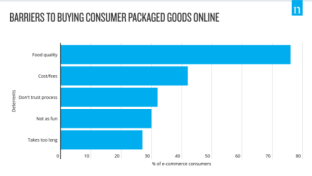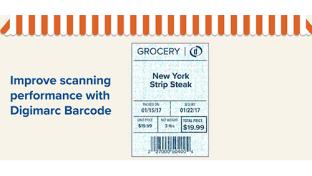What Does Walmart’s Intelligent Retail Lab Mean for Grocery?
Walmart Inc.’s transformation of a Neighborhood Market in Levittown, N.Y. into what it calls an Intelligent Retail Lab (IRL), featuring AI-enabled cameras, interactive displays and a vast data center, has garnered plenty of publicity, but what do these latest technological moves by the Bentonville, Ark.-based mega-retailer – No 1 on Progressive Grocer’s 2018 Super 50 list of the top grocers in the United States – actually mean for the company and the industry in general?
To find out, PG Editorial Director Jim Dudlicek asked Eli Finkelshteyn, CEO and co-founder of San Francisco-based Constructor.io, a cloud-based search-as-a-service, and Darin Archer, CMO of Vancouver, British Columbia-based Elastic Path, a provider of flexible enterprise commerce software. Following are their responses.
PG: What do you think of Walmart’s use of AI for inventory, stocking and cart availability rather than for automated checkout like Amazon Go?
Eli Finkelshteyn: Both Walmart’s and Amazon’s approach to AI illustrate how AI will continue to play a larger and more prominent role in commerce. While Amazon Go may provide a glimpse of what brick-and-mortar shopping will be like in years to come, Walmart’s use of AI in areas like inventory and stocking is clearly targeted at the here and now. Ever focused on efficiency, Walmart is using AI in clever and innovative ways to further streamline its operations. Some recent examples are technology to automate out-of-stock detection and adding in-store search to their app to make products easier to find for consumers (and encourage downloads of the Walmart app). They might not look as shiny as Amazon Go, but they do drive the metrics Walmart cares about right now.
Darin Archer: Amazon and Walmart are obviously taking very different approaches to how AI can be used to serve consumer needs. I think ultimately, the approach that will be the most successful will be the one that actually addresses what the store’s consumer is looking for. Is an automated checkout bringing the most value to shoppers, or will they appreciate the broader availability of products? Shoppers want things that make their lives easier, but ease and convenience may look different to different shoppers. Retailers – whether Walmart, Amazon or otherwise – need to make sure their experiences support customers’ needs.
PG: How do this new store and Walmart’s other recent technology investments position it against Amazon in the CPG and grocery industry?
EF: Walmart is racing to become a technology leader before Amazon becomes great at in-store logistics and operations. The future of commerce will be a mix of online shopping, in-store sensory experiences and VR, and both companies recognize this. With its recent acquisitions of Aspectiva and Polymorph, Walmart is clearly focused on building its tech advantage and enhancing its online experience. We can expect Walmart to continue to explore ways of unifying its online and in-store experiences through tech acquisitions, third-party partnerships and in-house development on its path to becoming a tech powerhouse.
DA: Walmart’s big advantage against Amazon has been their physical footprint. The option to buy online and pick up in store has been huge for them, and for many people, ordering something and picking it up at their nearest Walmart is faster and easier than a shipment from Amazon. As a parent with small children, I already use the pickup-in-store option, as I don’t need to get the kids out of the car to grab a few items that we can’t wait 24 hours for.
PG: Brands and stores are investing more in new technologies like AI. Do you think these technologies are a good investment, and what will differentiate different brands investments in these technologies?
EF: There are really three important questions companies should ask when considering investments in AI: 1) What is the expected ROI? 2) What is the fastest way to test if that ROI is realistic and achievable? 3) Is there a more strategic advantage to spending on building in-house, owning the tech but having to manage maintenance, or is it better to partner with best-of-breed third-party vendors, not owning the tech but being able to have faster time to market and the ability to easily switch if better technology comes along?
It’s difficult and expensive to build everything in-house, and success stories for brands and stores doing everything in-house are few and far between. The brands and stores who will most be able to differentiate themselves in the field in AI will be those that create a vision with a clear role for AI, choose the right mix of in-house and third-party partners to build that vision, and test constantly to make sure their partners have not fallen technologically behind.
DA: No matter how buzzy a new technology is, brands shouldn’t invest in new experiences that aren’t meeting actual consumer needs. No one cares if you have an AR app if it doesn’t make their shopping experience any easier or better. There are a lot of ways that companies can leverage new tech to improve the customer experience, whether through improving self-checkout, investing in voice technology, or closing the gap between the in-store an online experience. The companies that will be successful are those that understand their consumers’ pain points and frustrations, and invest in technology that removes friction from the purchasing process.
PG: How can AI and other technologies create a personalized in-store and online grocery shopping experience?
EF: Personalization should mimic all the qualities of a great salesperson: It should use your past behavior to predict your future purchases, it should alert you to new products that you might not otherwise hear about, and it should cater to a broad range of people, preferences and styles. Done correctly, today’s AI algorithms can mimic all these qualities, and deliver truly individualized, customized experiences for every user. It can also deliver improved revenue numbers and customer loyalty, among other benefits.
AI-based personalization is certainly possible, but be cautious: If you decide to use a third-party vendor, remember that most promises of this by vendors are overhyped, especially with older vendors who are better at marketing. When evaluating, don’t just rely on fancy vendor demos of AI and personalization. Go to their customers’ sites and verify for yourself personalization is actually happening.
DA: Creating a unified view of a customer across both online and in-store transactions is essential for creating a personalized shopping experience. Let’s say a customer sees an ad for a Thanksgiving turkey while browsing Facebook on their laptop. Later, a second ad for the same holiday promotion pops up while the consumer is on the grocer’s website adding items to their online cart, but they decide it would just be easier to stop by the store. At the store, they then buy the turkey. In this case, the ads worked, but without a cross-channel view of the customer, the grocer has no idea the consumer completed the purchase. Consumers are becoming more open to app-based loyalty programs as more brands in the space move toward this model, and these programs will allow brands and stores to have a better picture of their customers and service them in a more personalized fashion.






